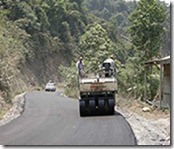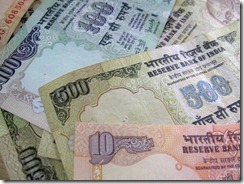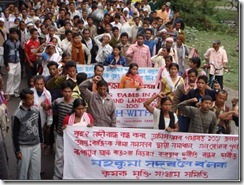
UTI CNBC-TV18's special show Financial Advisors Forum focused on the techniques of increasing investment penetration in a market like Guwahati. There are lots of tools available and most people have a lot of money in savings, but they don’t know whether they want to put that into investment. The discussion highlighted on that idea for the people.
The forum also targeted on various aspects of how to mould a client into becoming an investor. North East is a labour oriented industry with timber and tea exports. The people there don’t plan for retirement and could have a lack of funds post retirement.
A lot of North East youth and children go out to metros to pursue higher education. The programme also focused on how parents fund their education costs. The aspects like how can financial advisors tap a market, penetrate this market and make these savers into investors would also be covered.
The panellist for the discussion included BP Muktieh, chairman and managing director of North Eastern Development Finance Corporation; Naresh Pachisia, managing director of SKP Securities and a certified financial planner; Debashish Mohanty, country head of retail network at UTI and RK Garg, chief general manager of North Eastern circle at SBI.
Here is the edited transcript of their discussion.
Q: How to increase the investment penetration? What should be the roadmap for it?
Mohanty: The investment penetration is very low in this part of the country and whole of the country. Out of 120 crore population, there might be around 1.5 crore unique mutual fund investors. It clearly states the agenda that we need more penetration.
This product is intangible which delivers value at a future point of time, and need a bit of effort to explain and create the need in the minds of investor who doesn't feel the necessity on its own. For this, we need to create more number of advisors, whether it is an individual financial advisor or a banker acting on behalf of its remote branch or a post office or a sub-broker of a distributor.
At present, we have only 40,000 KYD compliant advisors to promote or penetrate in 120 crore population. We should encourage and facilitate anyone coming for more advisors.
We should also create an atmosphere of investment by spreading investor education, which not only required creating the amount the people who can invest, but it can also be started at an early age in school or colleges by inculcating the right curriculum.
Q: What has been your experience? You have seen this market. Do you think that your bank is playing a crucial role in terms of penetrating in this market in terms of financial planning?
Garg: The awareness about investment product is very low here. People mostly back with different banks, put their money in fixed deposits or savings bank accounts and wait for that annual rate of interest.
Therefore, SBI reaches out to different clusters of people spread across the North East, for example, executives of Oil India, ONGC and army establishments as we have nearly 200 thousand army men across seven states.
We organise groups, collect 50 people and send out people to inform them to improve their returns from various types of investments.
Q: What is the key factor needed to penetrate a market like this? What are the challenges that a financial advisor has to go through?
Pachisia: More number of advisors penetrating a very under penetrated market of investors potential investors, who are right now savers but not yet investors, and educating them about the need to think of the financial wellbeing of their family. Then, they create of a good relationship with them and think of this profession on a scalable basis.
Q: The advisors should meet the needs of the customers or harp on those needs. What is the mindset of people here? Most of the youth go out of North East to metros to pursue higher education and the costs are large. Are parents doing enough? Is it a need that financial advisors can look into and everyone needs to be trained on that?
Muktieh: As far as North East is concerned, it is a very potential market and very underserved. The capital market has been largely ignored. There is a need for advisors where people from the region can attend to and they can advise them on how to invest.
As of now, when we look at the region, each of these states have been growing at a very high rate almost at the all India level in the last seven-eight years. People will be turning to the capital markets only when they are confident.
Since there is a lack of knowledge, there is a need to educate them and that’s the role of the financial advisor. For that, they need to be very confident themselves. There is need for the advisors to upgrade and educate themselves. Their confidence will encourage these people to invest in these areas.
Source : CNBC-TV18
 Aizawl, Dec 23 : Mizoram has rejected the World Bank’s assessment of the state roads project being “moderately satisfactory”, saying it was “highly satisfactory”.
Aizawl, Dec 23 : Mizoram has rejected the World Bank’s assessment of the state roads project being “moderately satisfactory”, saying it was “highly satisfactory”.












